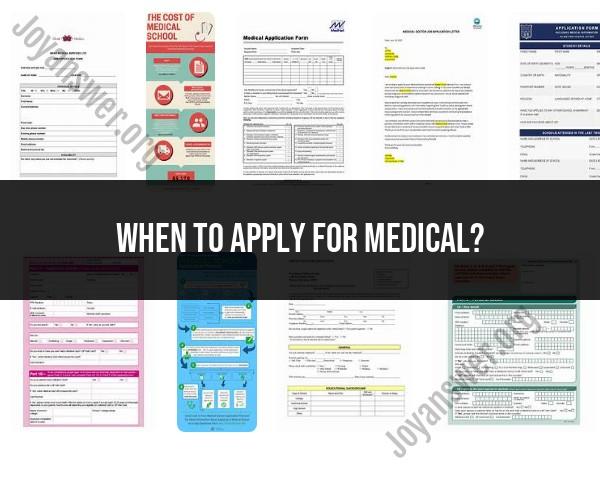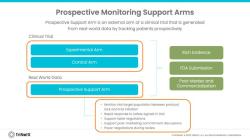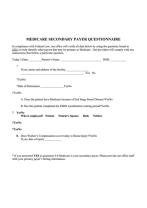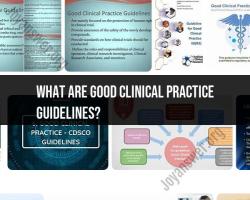When to apply for medical?
The timing for applying to medical school can vary depending on the country and the specific admissions cycle of the medical schools you are interested in. Here are general guidelines for when to apply to medical school in the United States, as it follows a fairly standardized application process:
Undergraduate Education (Bachelor's Degree): Typically, individuals who aspire to attend medical school complete a bachelor's degree first. This undergraduate degree can be in any major, but it often includes prerequisite coursework in biology, chemistry, physics, and mathematics. It's important to maintain a strong GPA during your undergraduate studies.
Preparation for the Medical College Admission Test (MCAT): The MCAT is a standardized test that assesses problem solving, critical thinking, and knowledge of natural, behavioral, and social science concepts and principles. Most applicants take the MCAT during their junior or senior year of undergraduate studies.
Gap Years (Optional): Many students take one or more gap years between completing their undergraduate degree and applying to medical school. During this time, some students pursue additional academic or research opportunities, gain clinical experience, or engage in volunteer work. Others may pursue master's degrees or work in healthcare-related fields.
Primary Application (AMCAS): In the United States, the primary application for most medical schools is submitted through the American Medical College Application Service (AMCAS). The application typically opens in early May, and submission deadlines vary but are often in the late spring or early summer of the application year.
Secondary Applications: After submitting the primary application, some medical schools may send secondary applications with additional essay questions. These are usually due within a few weeks of receiving them.
Letters of Recommendation: As part of the application, letters of recommendation are often required. These should be secured well in advance, and letter writers should be given ample time to write and submit their recommendations.
Interviews: If selected, applicants may be invited for interviews, which typically take place from the fall to early spring.
Application Deadlines: It's crucial to be aware of the specific application deadlines for each medical school to which you are applying. Deadlines can vary, and applying earlier in the cycle can sometimes be advantageous.
Acceptance and Matriculation: If accepted, students usually matriculate into medical school the following fall.
Keep in mind that these steps are general guidelines, and it's essential to check the specific requirements and timelines of the medical schools you are interested in, as they can vary. Additionally, application processes may differ in other countries.
What is the ideal time to submit an application for medical insurance?
The ideal time to submit an application for medical insurance depends on your specific circumstances and the type of insurance you are applying for. However, there are some general guidelines that can help you maximize your chances of getting approved for coverage and avoid any gaps in coverage.
For individual health insurance:
The open enrollment period: The open enrollment period is the time of year when you can enroll in a new health insurance plan or make changes to your existing plan. For 2024, the open enrollment period runs from November 1st to January 15th.
Special enrollment periods: If you have a qualifying life event, such as losing your job or getting married, you may be eligible for a special enrollment period. This allows you to enroll in or change your health insurance plan outside of the open enrollment period.
For employer-sponsored health insurance:
When you start a new job: If you are starting a new job, you will typically have a period of time (usually 30-60 days) to enroll in your employer's health insurance plan.
During your annual benefits enrollment period: Most employers have an annual benefits enrollment period when employees can make changes to their health insurance coverage, including adding or dropping dependents.
Here are some additional tips for submitting an application for medical insurance:
Gather all of your documentation: Before you start the application process, make sure you have all of the documentation you need, such as your Social Security number, birth certificate, and proof of income.
Complete the application accurately: Take your time and carefully complete the application form. Make sure to answer all of the questions completely and accurately.
Submit your application on time: Missing the deadline for submitting your application could result in a delay in getting coverage or even being denied coverage altogether.
Here are some resources that can help you find and apply for medical insurance:
HealthCare.gov: HealthCare.gov is the official marketplace for health insurance in the United States. You can use the website to compare plans, see if you qualify for subsidies, and enroll in a plan.
State health insurance marketplaces: Many states have their own health insurance marketplaces that offer a variety of plans. You can find a list of state marketplaces on the HealthCare.gov website.
Insurance agents and brokers: Insurance agents and brokers can help you find and compare plans, and they can also assist you with the application process.













